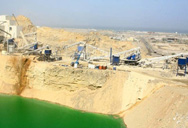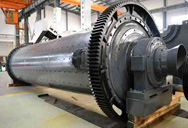


2020-9-1 Solid wastes in steel plants are essential by-products generated during various processing steps involved in the production of iron and steel. Solid wastes generated by integrated iron and steel works cause environmental pollution and therefore must be discarded. Until the last decade, the slag, dust and sludge generated by integrated steel
Read More
Construction and demolition waste makes up approximately 25% of all waste generated in the EU ... iron and steel are the most ... Read more About Program Waste Management Single-Stream Recycling
Read More
2020-11-19 Of this an estimated 60 million tonnes (54%) was construction and demolition waste, 51 million tonnes (46%) excavation waste and the remaining 9 million tonnes (8%), was dredging spoil. The figure (right) shows estimates of the breakdown
Read More
2020-4-14 Construction site waste can be described as the non-hazardous by-product resulting from activities during new construction and renovation. It is generated during the construction process because of factors such as site preparation, material use, material damage, material non-use, excess procurement and human error.
Read More
2012-2-1 Construction and demolition (CD) wastes comprise waste generated from construction, renovation, and demolition of buildings, roads, and other infrastructures, and excavation of land associated with construction activities (QDERM, 2011). CD wastes include a wide range of different waste materials such as concrete, asphalt, bricks, tiles, timber, steel, and soil.
Read More
2009-3-6 The process of managing construction waste goes far beyond the disposal of the wastes itself. It is an all-encompassing strategy to effectively utilize construction resources, with the view to reducing the quantity of waste and also utilizing the generated waste in the most effective manner. The most common approach to management of ...
Read More
2012-5-29 CD debris is one type of solid waste. It is a large and varied waste stream that includes concrete, asphalt, wood, gypsum, and asphalt shingles generated from the construction, renovation, and demolition of buildings, roads, bridges, and dams. Total CD
Read More
6.4 Construction Waste Management. The general application of a construction waste management plan is to minimize the amount of materials going to landfills during construction by diverting the construction waste and demolition and land clearing debris from landfill disposal. It also helps redirect recyclable recovered resources back to the manufacturing process and redirect reusable materials to appropriate
Read More
waste generated at mineral benification plantwaste generated during the construction process of steel. Fill in this form or click the service online, all questions will be answered. ... Construction waste recycling is the separation and recycling of recoverable waste materials generated during construction and remodeling. Some materials can be ...
Read More
2021-5-16 Many industrial processes have the potential to produce hazardous waste. To help potential hazardous waste generators identify if they produce hazardous waste, EPA provides examples of hazardous wastes that are typically generated by specific industries and provide suggestions for how to recycle, treat or dispose of the wastes according to federal regulations.
Read More
2020-3-30 Construction waste poses a great danger to the environment. For this reason, construction industries need to find suitable methods to manage construction and demolition materials that generate waste during construction activities. Using trash chutes to get waste out of the site is one good way of safe waste
Read More
2009-3-6 The process of managing construction waste goes far beyond the disposal of the wastes itself. It is an all-encompassing strategy to effectively utilize construction resources, with the view to reducing the quantity of waste and also utilizing the generated waste in the most effective manner. The most common approach to management of ...
Read More
Quantity and quality of construction waste generated from any specific project would vary depending on the circumstances and types of materials used in the project. Recycling of construction waste is one way to counter risk to construction wastes. So, the invention
Read More
2019-5-10 Why is Construction Waste Management Important? According to government statistics, in 2016 construction and demolition businesses in the UK generated 66.2 million tonnes of waste. However, they managed to recover 60.2
Read More
2012-5-29 shingles generated from the construction, renovation, and demolition of buildings, roads, bridges, and dams. Total CD waste was estimated to be 325 million tons in 2003. CD debris is not federally regulated, except to the extent that solid waste landfills must fol low a few basic standards outlined in the Federal Register at 40 CFR Part 257 ...
Read More
A. Demolition and Construction Waste: materials and debris generated during construction, renovation, demolition, or dismantling of all structures and buildings and associated infrastructure. CD Waste includes, but is not limited to, the following non-hazardous items: o Building components and structures (wall studs, insulation, doors, windows)
Read More
2020-8-9 Construction Demolition Waste. The growth in the construction industry triggers waste production to exponential levels. The waste generated from the construction industry is commonly called as Construction Demolition Waste or CD waste. Most of the waste materials in construction industries are non-biodegradable and inert materials.. Construction waste
Read More
2018-4-6 Construction, demolition and excavation (CDE) was responsible for 59% of that number. However, the recovery rate for non-hazardous construction and demolition rate in 2014 was 89.9%, placing us ahead of the EU target of 70% by 2020. So, while the construction industry is still amongst the largest contributors for waste
Read More
waste generated at mineral benification plantwaste generated during the construction process of steel. Fill in this form or click the service online, all questions will be answered. ... Construction waste recycling is the separation and recycling of recoverable waste materials generated during construction and remodeling. Some materials can be ...
Read More
2009-3-6 The process of managing construction waste goes far beyond the disposal of the wastes itself. It is an all-encompassing strategy to effectively utilize construction resources, with the view to reducing the quantity of waste and also utilizing the generated waste in the most effective manner. The most common approach to management of ...
Read More
2020-4-8 waste/rubbish that will be generated during construction i.e. Dial-a Dump, JM Waste, Bradshaw's etc. 5.4 Where possible there will be separate waste bins on site to cater for the following rubbish: • Masonry and Concrete. These materials will be taken away and re-cycled for hardcore filling for other sites. Due to the nature of
Read More
2020-3-30 Construction waste poses a great danger to the environment. For this reason, construction industries need to find suitable methods to manage construction and demolition materials that generate waste during construction activities. Using trash chutes to get waste out of the site is one good way of safe waste
Read More
Quantity and quality of construction waste generated from any specific project would vary depending on the circumstances and types of materials used in the project. Recycling of construction waste is one way to counter risk to construction wastes. So, the invention
Read More
2020-8-9 Construction Demolition Waste. The growth in the construction industry triggers waste production to exponential levels. The waste generated from the construction industry is commonly called as Construction Demolition Waste or CD waste. Most of the waste materials in construction industries are non-biodegradable and inert materials.. Construction waste
Read More
1998-1-1 Process solid waste from the conventional process, including furnace slag and collected dust, is generated at an average rate ranging from 300 kg/t of steel manufactured to 500 kg/t, of which 30 kg may be considered hazardous depending on the concentration of heavy metals present.
Read More
A. Demolition and Construction Waste: materials and debris generated during construction, renovation, demolition, or dismantling of all structures and buildings and associated infrastructure. CD Waste includes, but is not limited to, the following non-hazardous items: o Building components and structures (wall studs, insulation, doors, windows)
Read More
2021-6-17 Construction waste is one of the most recovered and recycled one. Construction waste includes a wide variety of materials. Some of this construction waste can be recycled while some is considered to be hazardous in nature. To effectively manage construction waste, it is important to identify and classify the types of construction waste.
Read More
2018-2-27 When work is finished in the construction process, and information about it is provided to the planner, the third stage of the planning process can begin. The evaluation stage is the one in which results of the construction process are matched against the estimate. A planner deals with this uncertainty during
Read More
